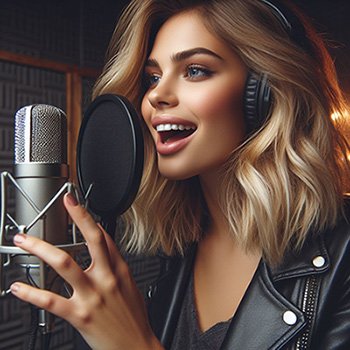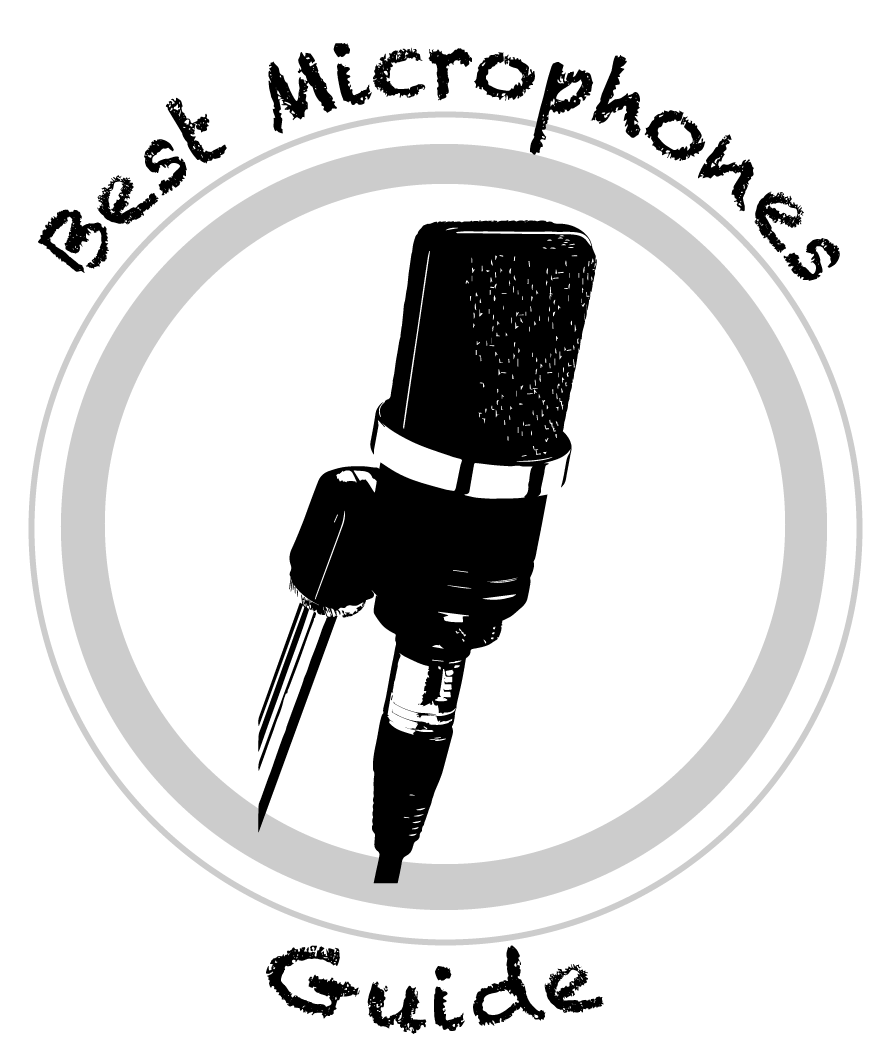The Best Microphones for Recording Vocals
As an Amazon Associate, I earn from qualifying purchases at no additional cost to you.

Whether you are interested in getting your very first microphone to record your singing or whether you are looking to take the next step to upgrade your vocal recordings, our Best Microphones for Recording Vocals list will point you in the right direction.
Background Information:
Microphones were tested on several different types of songs. ALL the dynamic microphones that we tested were tested while being run through a Cloudlifter CL-1, which is an inline mic activator that provides up to 25db of clean gain. Many dynamic mics are low output and lacking in gain. Using Cloudlifter or a similar mic activator like the Fethead has a noticeable beneficial effect on dynamic microphones that are being used for recording vocals.
While the microphones we selected after our testing are microphones that we believe most vocalists would be pleased with, keep in mind that some microphones may sound better or worse with a particular singer, type of singer, or style of music. Additionally, condenser microphones tend to pick up more background sounds than dynamic microphones do, so depending on your home recording set up, this may be a factor to consider.
Our Top Picks at a Glance:
| Our Top Picks | Microphone |
| Best Overall: | Neumann TLM102 |
| Runner Up: | Rode NT1 |
| Best Value: | Shure SM58 |
| Best for Rock Vocals: | Shure SM7B |
(commissions earned)
For full reviews and test results, read on below
The Best Microphones for Recording Vocals:
- Neumann TLM 102 – The Neumann TLM 102 is our top pick for recording vocals. This little brother to the Neumann TLM 103 is one of the crown jewels of Neumann’s “Prosumer” line of microphones. Known primarily for its prowess in the vocal realm, it consistently delivers high quality, smooth, and natural sounding vocals.
When you buy a TLM 102, you get an amazing, very solidly built large diaphragm condenser microphone, and that’s pretty much it. It comes with no frills – no shock mount is included and there are no roll off switches. The Neumann-made shock mount can be purchased separately. At its relatively high price point, the TLM102 is probably a microphone that is best suited to people who are trying to upgrade their vocal microphone rather than someone who is looking to buy their first mic for recording singing. The mic does go on sale from time to time for those who are patient.
All that said, most singers would be delighted with the Neumann TLM 102. As alluded to above, it produces a very nice smooth sound with excellent detail. It is consistently good; you will not get uneven results. Its natural sound avoids many issues that affect some mics, such as sibilance.
As an additional bonus, the mic, which comes in both black and nickel color options, is very sharp looking and ascetically pleasing.
The Neumann TLM 102 performs well in some secondary uses as well. It does a good job recording electric and acoustic guitars, and if you happen to have 2 of them, it does a nice job on drum overheads.

- Rode NT1 – Our second pick for recording your singing is the Rode NT1, which offers high quality vocal recordings at a significantly lower price point than the Neumann. If you get the kit (one way to buy it), it also includes a shock mount and pop filter.
Similar to the Neumann TLM102, the Rode NT1 is a large diaphragm condenser microphone. It captured nice detail, and had a pretty smooth, good all around sound. The high end really cuts through, and in a good way.
Rode also has a similar, popular microphone called the Rode NT1A. Basically, they took the Rode NT1, and made an anniversary version (hence the A). In the anniversary version, they changed some things, however. Many people consider the Rode NT1A to be more harsh sounding and sibilant. You can see why that would be if you compare the frequency response graphs for the two microphones. The NT1A has a significant presence boost between 10,000-15,000Hz or so that the NT1 does not have.

- Shure SM7B – The first of 4 successive, dynamic microphones on our Best Microphones for Recording Vocals list, the Shure SM7B is ubiquitous on podcasts and YouTube videos. Anyone who looks into it at all will hear about how Michael Jackson recorded his famous Thriller album using an earlier version of this mic. It is also popular in rock music where many singers are singing and / or screaming at a loud volume.
In our testing, and depending on the type of singing, vocals recorded with the SM7B could be described as floating or gliding over the music. The mic is very smooth, pleasant, and natural sounding. However, it does not capture quite as much detail as the condenser microphones. There is still detail, but it is just slightly more subtle than the condensers. As a dynamic mic, it picks up less background noise than the condenser microphones.
The Shure SM7B has switches for bass rolloff and presence boost, offering some extra sonic versatility.
In addition to being a fantastic mic for putting your singing on “tape,” the SM7B does a better than good job of recording electric guitar, and can also be used for certain drums.
- Shure SM58 – The Shure SM58 cardioid dynamic microphone is one of the most recognizable microphones in the world. If you’ve watched live performances or music videos, you’ve surely seen it. They are also one of the go to mics for vocals in live performances. When we were growing up, it seemed like we had it made to have a SM58 for singing and a SM57 for instruments.
In our testing, the Shure SM58 sounded really good, producing very nice and pleasant sounding vocals. It brings out more of the high end that cuts through, for good or for bad (depending on the song and your personal preferences). The high end can definitely be a little punchy in spots. Detail was fairly good.
Having also used this for many years for recording vocals without a Cloudlifter, this is definitely a microphone that benefits significantly from the mic activator. If you buy this mic and use it in conjunction with a mic activator, you may never feel the need to upgrade your mic.
The Shure SM58 is relatively affordable, especially in comparison to other top vocal microphones.

- Sennheiser MD421-II – Like the Shure SM57, the Sennheiser MD421-II is better known for electric guitar and percussion use. However, it also performs admirably in recording singing. A cardioid dynamic microphone, it has a 5 position bass rolloff switch for added versatility.
Like the Shure SM58, it captures a bit of a high end that cuts through the mix a little extra. Interestingly, it has a little bit of a similar slight edge around certain lower vocal notes as well. As noted with the SM58, this can be good or less good depending on the song and your personal preferences. Despite this, the mic is relatively smooth and natural sounding overall, and its vocals float nicely above the music. It perhaps has a bit more detail than the Shure dynamic mics.
The Sennheiser MD421-II has the added benefit of being one of the premier, industry-standard choices for recording electric guitar, snare drums, and toms.
- Shure SM57 – The Shure SM57 was a pleasant surprise in our vocal microphone testing. Known primarily for other uses, such as recording electric guitar or snare drum, it performed surprisingly well when we tested it on vocals. Much of the time, the SM57 was not markedly different from the SM58. On certain parts of songs, it seemed a little darker or slightly damped down, and the high end detail was missing and cut out. Therefore, it was a little more uneven in its performance in capturing singing.
However, for the most part, you would never know that the Shure SM57 was a mic that was not known for vocals. It works well enough that you might never notice that it was not a vocal mic. If listening to singing that was recording with the SM57, you would probably never say, “what the heck did this person use for a microphone?” It did a very nice job overall on vocals and was definitely our biggest surprise during the testing.
It is just one more reason to consider that if you can only afford one microphone that needs to be a jack of all trades, that this is probably the one, given its reasonable price point, history as the one of the go to mics for electric guitar and snare drum, and its ability to mic toms, bass drums, and acoustic guitars.
This mic was another very significant beneficiary of being run through the Cloudlifter CL-1. You would not get the same results on the SM57 without it or another mic activator.

